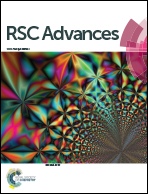One-step electrodeposition of a self-cleaning and corrosion resistant Ni/WS2 superhydrophobic surface†
Abstract
Superhydrophobic surfaces have been intensively investigated for applications requiring self-cleaning and corrosion resistance. The techniques used to fabricate such a coating tend to be costly, time and energy consuming; further surface modification steps are often needed. In this study, a superhydrophobic composite electrodeposit based on tungsten disulphide nanoparticles dispersed in nickel on a mild steel substrate was successfully developed. At room temperature, the deposit showed a water contact angle of 158.3 deg and a sliding angle of 7.7 deg. The effects of operational parameters on surface morphology and superhydrophobicity are discussed. Compared to the substrate, the robust surface of the as-prepared coatings exhibited good self-cleaning and corrosion resistance, providing potential for industrial applications.


 Please wait while we load your content...
Please wait while we load your content...